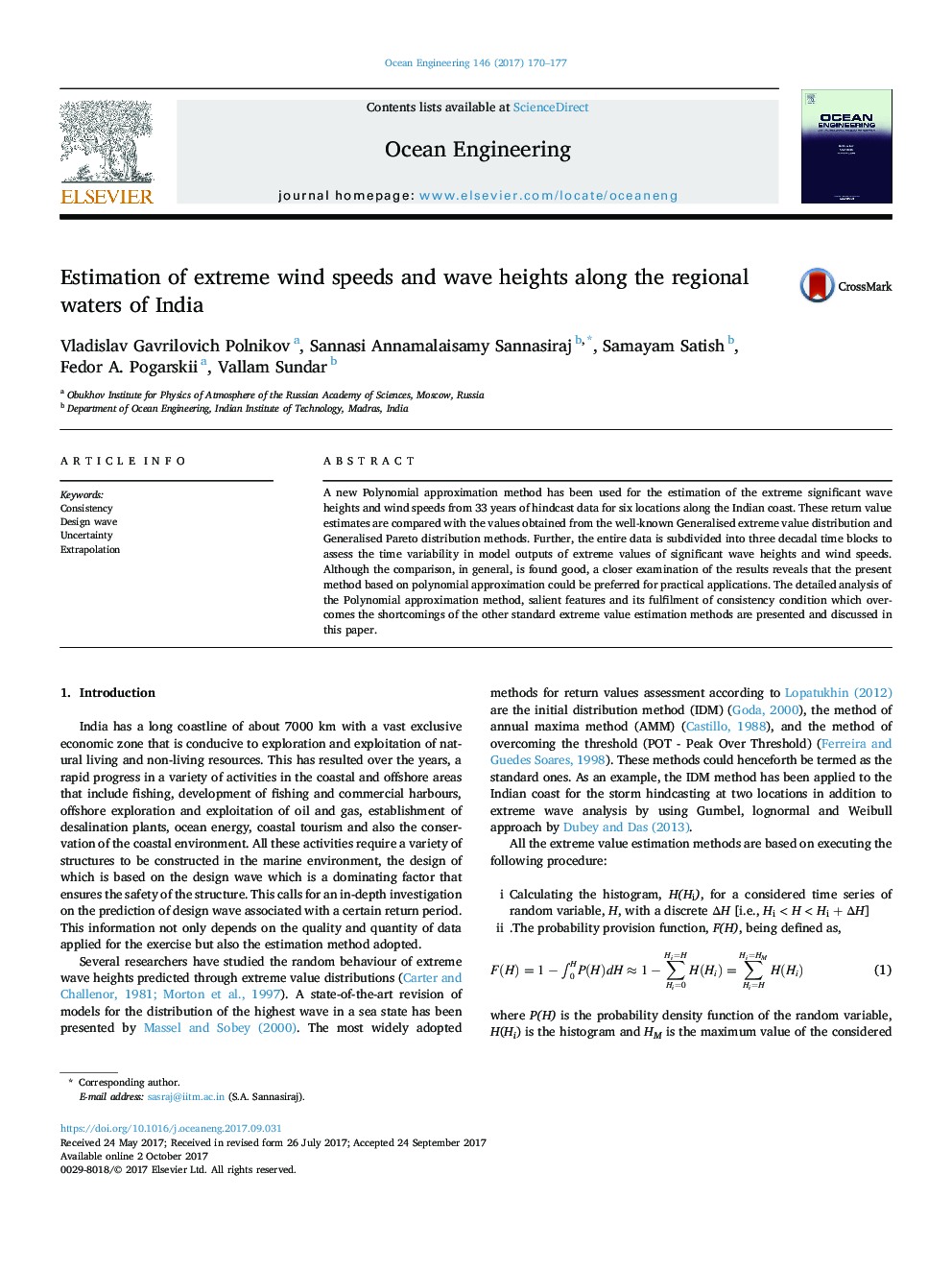| کد مقاله | کد نشریه | سال انتشار | مقاله انگلیسی | نسخه تمام متن |
|---|---|---|---|---|
| 5474061 | 1520644 | 2017 | 8 صفحه PDF | دانلود رایگان |
- A Polynomial approximation (P) method has been used for the estimation of extreme significant wave heights and wind speeds.
- For this 33 years of hindcast data for six locations along the Indian coast were used.
- The salient features of P-method and its distinct advantage of optimising the return values are discussed in detail.
- The consistency condition of P-method was discussed which overcomes the shortcomings of the other standard methods.
- The extreme values starting from wave data belonging to successive time blocks of the same time width were also calculated.
- The reason for looking at this is to assess the time variability in model outputs of wave heights and wind speeds.
A new Polynomial approximation method has been used for the estimation of the extreme significant wave heights and wind speeds from 33 years of hindcast data for six locations along the Indian coast. These return value estimates are compared with the values obtained from the well-known Generalised extreme value distribution and Generalised Pareto distribution methods. Further, the entire data is subdivided into three decadal time blocks to assess the time variability in model outputs of extreme values of significant wave heights and wind speeds. Although the comparison, in general, is found good, a closer examination of the results reveals that the present method based on polynomial approximation could be preferred for practical applications. The detailed analysis of the Polynomial approximation method, salient features and its fulfilment of consistency condition which overcomes the shortcomings of the other standard extreme value estimation methods are presented and discussed in this paper.
Journal: Ocean Engineering - Volume 146, 1 December 2017, Pages 170-177
